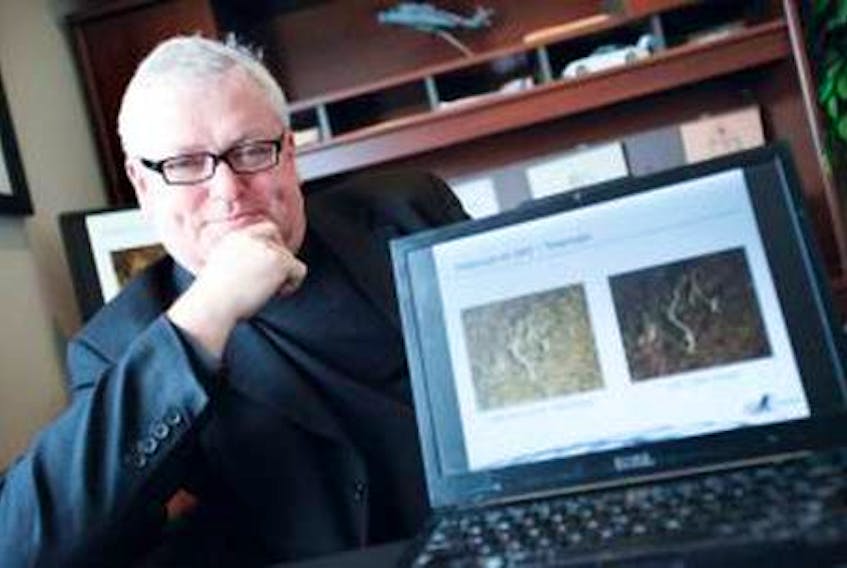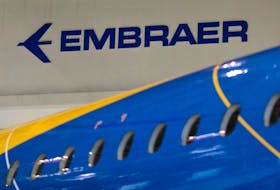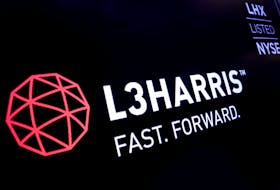After helping to locate test models of the Avro Arrow lost in the depths of Lake Ontario in the mid 1950s, Kraken Sonar Inc. will take part of a much bigger search.
The St. John’s-based marine technology firm will have its patented AquaPix synthetic aperture sonar installed on a number of autonomous underwater vehicles (AUV) that will be used in a renewed search for the remnants of Malaysian Airlines Flight MH370, which vanished over the Indian Ocean nearly four years ago.
“These guys are pretty technologically advanced,” Kraken president and CEO Karl Kenny says of Ocean Infinity, the Texas-based company with which Kraken inked a $3-million contract in September.
“The ship, the drones and all the robots they’re using are state of the art and they wanted to have the best in sonar technology, and that’s why they came to us.”
The search operation will take place aboard the Seabed Constructor, a Norwegian offshore supply vessel under contract to Ocean Infinity. The nearly 7,900-tonne ship left Durban, South Africa, this week to steam toward Australia, its first port of call, where it will be met by a team from Kraken.
“The ship’s supposed to make port of call late in the first week of February and we’ll have our guys meet the ship with all the equipment and start the first sets of installation,” says Kenny, noting his team was pulling extra hours over the holiday season to be ready to deploy in the new year.
After that, it won’t be long before the search gets underway, as Ocean Infinity aims to take advantage of the favourable summer conditions until late June or early July.
It will be the first official search for the ill-fated Boeing 777, its 227 passengers and 12 crew since the a Malaysia-, China- and Australia-funded search that lasted more than 1,000 days was called off last January. At the time, the Australian Transport Safety Bureau’s final report on the search conceded that authorities were no closer to knowing the reasons for the plane’s disappearance, or its exact location.
Where the original search, conducted by Dutch company Fugro, used just one AUV at a depth of 4,000 metres, Ocean Infinity is taking steps further by deploying eight AUVs that can travel to a depth of 6,000 metres. There are only a handful of companies in the world with sonar technology that can operate at those depths, and Kraken is one of them.
“The (SAS) is perhaps the most sophisticated sonar tech in the world and it’s deepsea rated. We can go to 6,000 metres and that’s what they wanted,” Kenny said.
Even with the use of some of Fugro’s data from scanning over 120,000 square kilometres of seabed, Kenny says, it’s still like “searching for a needle in a haystack of needles.”
The odds, however, don’t get in the way of confidence.
“With the technology that’s being deployed here, if we’re in the right area, we’ll find it,” he says. “It’s the same kind of feeling we had when we were looking for the Avro Arrows and after 60 years we were the first to find them.”
Should they be successful, Kenny says, not only is it a coup for Kraken on the international stage, but they’ll have helped the families of those lost on the aircraft find some closure.
“It’s going to be four years in March since she was lost, so there’s a lot of grief and closure needed there,” he says. “If we’re able to help some way in doing that, that’s the other thing that’s motivating our crew.”
Officials in Australia, who oversaw the original search because the airliner is thought to have crashed in the vast area of Australian search and rescue responsibility, are not as confident.
New Australian Transport Minister Barnaby Joyce told the Australian Broadcasting Corp. on Thursday that the decision on whether to resume the search was Malaysia’s.
“I can understand how Malaysians are incredibly driven to find the wreckage,” said Joyce, who became transport minister two weeks ago.
“I have, to be quite frank, some concerns as to whether it will be found.”
— With files from The Associated Press
Twitter: kennoliver79









